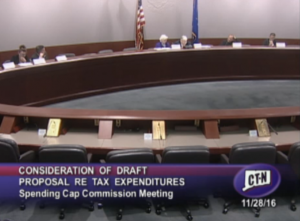Rate of Success Obtaining Venture Capital is High in Hartford, Study Finds
/A look at the nation’s 50 largest metropolitan areas to see how entrepreneurs have fared in their quests to secure money from venture capitalists, angel investors, and online crowds brought a somewhat surprising result – among the cities mentioned as ranking high in venture funding success rates was Hartford. Connecticut’s Capitol was listed among a handful of cities with success rates for businesses seeking venture capital that “are about twice as high as the national average.”
According to a new report issued this month by the Kauffman Foundation, roughly $68 billion was invested in venture capital (VC) deals in the United States in 2014 and 7,878 employer businesses reported receiving venture capital funds. Thirty percent of those recipients were located in just four metro areas: New York, Los Angeles, San Francisco, and Boston. The national average was 0.2%.
Among the metro areas that rank highly in terms of those venture funding success rates, according to the report “Trends in Venture Capital, Angel Investing and Crowdfunding,” include: San Francisco, CA (0.8%), San Jose, CA (0.8%), Boston, MA (0.5%), Hartford, CT (0.5%), Memphis, TN (0.4%), Minneapolis, MN (0.4%), Philadelphia, PA, (0.4%), Richmond, VA (0.4%), Washington, D.C. (0.4%). Among the lowest ranked of the 50 largest metropolitan regions in the nation, at 0.1 percent, were Baltimore, Denver, Jacksonville, Las Vegas, Orlando, Riverside, and Tampa.
The report noted that “Some perhaps unlikely metro areas rank highly in terms of those venture funding success rates: Hartford, Memphis, Richmond, and Buffalo. This doesn’t necessarily mean that there are higher quality firms there, and, of course, the volume of firms seeking VC is smaller…And, these data don’t mean that all the funding came from local sources: venture capital firms in New York could be investing in Hartford businesses. But these numbers lend credence to arguments…that high-quality deals can be found everywhere, and that firms in these regions can succeed in raising equity capital.”
While 10.3 percent of entrepreneurs report using personal credit cards when starting their business, nationally, only 0.6 percent initially received venture capital, the analysis found.
The metros with the highest percentage of firms receiving venture capital funding when starting include: San Jose (2.4%), San Francisco (1.5%), Salt Lake City (1.3%), Aust in (1.2%), Baltimore (1.1%), Birmingham (1.1%), and Nashville (1.1%).
in (1.2%), Baltimore (1.1%), Birmingham (1.1%), and Nashville (1.1%).
According to the report, based on the 2014 Annual Survey of Entrepreneurs (ASE), “the primary sources of initial financing for new businesses in the United States are: personal and family savings, bank business loans, and personal credit cards.” The report notes, however, that “entrepreneurs also tap other sources of funding, including venture capital, which “can be disproportionately important for business growth.”
The ASE, conducted by the U.S. Census Bureau, is the largest annual survey of American entrepreneurs ever done, and is done in a public-private partnership between the Census Bureau, the Kauffman Foundation, and the Minority Business Development Agency. The ASE samples approximately 290,000 employer businesses across all U.S. geographies and demographics, the report explained.
The top metropolitan statistical area for crowdfunding success in 2014 was Charlotte; for angel investing, San Jose led the way. The report concludes that the concentration of venture capital firms in California, Massachusetts, and New York, “is well-correlated with the relative concentration of firms that receive VC investments.” Crowdfunding campaigns in Minneapolis and Oklahoma City, the report indicates, “may not be entirely due to local funders.”
“The ASE data add quantitative confirmation to what we know from other sources: high-quality entrepreneurs can be found—and can get funding—in nearly every corner of the United States.”
Including Hartford.


 That is the highest number of states falling short of revenue projections since 36 states budgets missed their mark in 2010, according to the NASBO report and
That is the highest number of states falling short of revenue projections since 36 states budgets missed their mark in 2010, according to the NASBO report and 
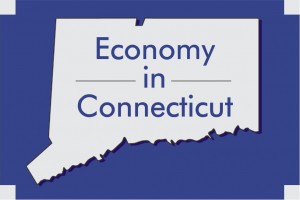
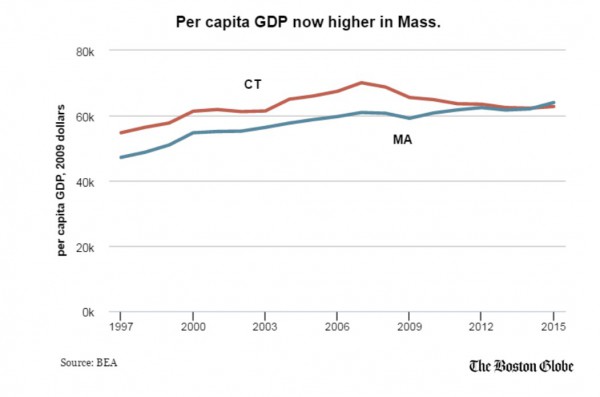 “The company will hire 14,000 new employees over the next 13 years,” the
“The company will hire 14,000 new employees over the next 13 years,” the 
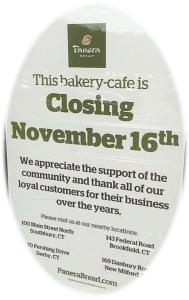
 As of June 28, 2016, there were 2,007 bakery-cafes in 46 states and in Ontario, Canada operating under the Panera Bread, Saint Louis Bread Co. or Paradise Bakery & Cafe names. Published reports indicate the company has 97,000 employees nationwide and saw a 3.4 percent growth in sales in its third quarter this year. In 2015, it reportedly generated roughly $2.7 billion in revenue. Founder and CEO Ron Shaich
As of June 28, 2016, there were 2,007 bakery-cafes in 46 states and in Ontario, Canada operating under the Panera Bread, Saint Louis Bread Co. or Paradise Bakery & Cafe names. Published reports indicate the company has 97,000 employees nationwide and saw a 3.4 percent growth in sales in its third quarter this year. In 2015, it reportedly generated roughly $2.7 billion in revenue. Founder and CEO Ron Shaich 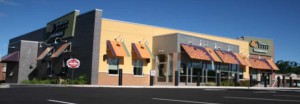
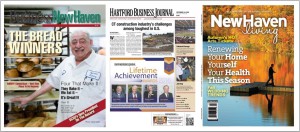 Each monthly addition of New Haven Living was nearly identical to Hartford Magazine, usually with a handful of New Haven-focused articles and features added. The Courant reported that it made the decision while evaluating opportunities to invest in higher-growth areas and the cost of distribution in Greater New Haven.
Each monthly addition of New Haven Living was nearly identical to Hartford Magazine, usually with a handful of New Haven-focused articles and features added. The Courant reported that it made the decision while evaluating opportunities to invest in higher-growth areas and the cost of distribution in Greater New Haven. A limited number of promotional copies will be limited “based on a proprietary algorithm for the support of our advertisers,” Young noted. He also indicated that plans are in the works to expand the publication’s
A limited number of promotional copies will be limited “based on a proprietary algorithm for the support of our advertisers,” Young noted. He also indicated that plans are in the works to expand the publication’s  The state’s construction industry unemployment rate nudged downward from 7.1 percent in September, but was 6.4 percent in July 2016. In recent years, the rate ballooned to 18.1 percent in October 2010, at the height of the recession, from a low of 5.8 percent in October of 2008.
The state’s construction industry unemployment rate nudged downward from 7.1 percent in September, but was 6.4 percent in July 2016. In recent years, the rate ballooned to 18.1 percent in October 2010, at the height of the recession, from a low of 5.8 percent in October of 2008.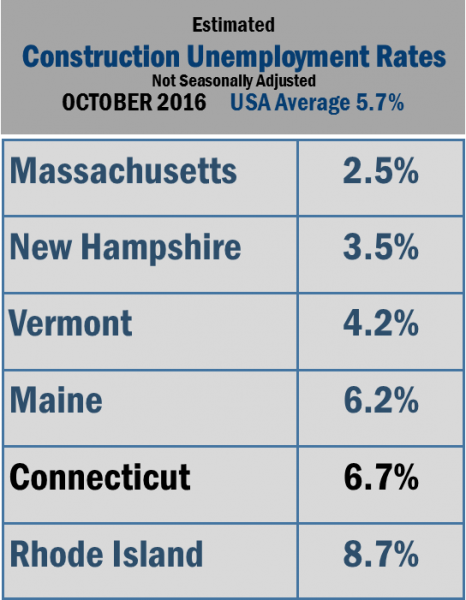

 Quality of life in the United States is heavily dependent on financial status, the survey summary points out. As a consequence, the nation’s best states to live in often report very high incomes. With a median household income of $71,346 a year, fifth highest of all states, Connecticut is the second
Quality of life in the United States is heavily dependent on financial status, the survey summary points out. As a consequence, the nation’s best states to live in often report very high incomes. With a median household income of $71,346 a year, fifth highest of all states, Connecticut is the second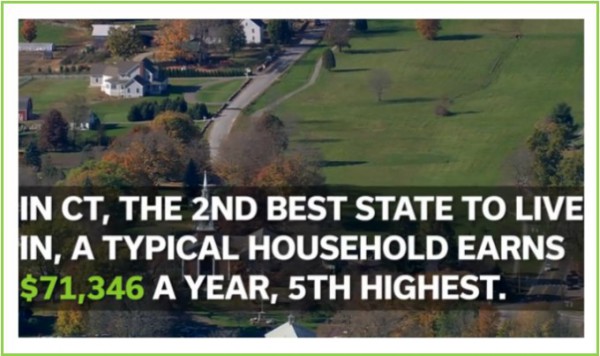
 In a reversal from the previous quarter, 42 percent of state residents surveyed said they were unlikely to move out of state in the next 5 years, compared with 34 percent who described such a move as likely. In the previous survey, conducted in the second quarter of this year, the numbers were reversed with 42 percent saying that it was likely they’d be moving out of state within five years, compared with only 32 percent who said such a move was unlikely.
In a reversal from the previous quarter, 42 percent of state residents surveyed said they were unlikely to move out of state in the next 5 years, compared with 34 percent who described such a move as likely. In the previous survey, conducted in the second quarter of this year, the numbers were reversed with 42 percent saying that it was likely they’d be moving out of state within five years, compared with only 32 percent who said such a move was unlikely. Residents of Windham and Fairfield counties were more likely to view overall business conditions as being better now than six months ago, the survey found. Twenty-nine percent of Windham residents held that view as did 28 percent of Fairfield residents. Residents of the state’s other six counties, Middlesex (23%), New London (20%), New Haven (20%), Litchfield (16%), Tolland (16%) and Hartford (16%) had fewer residents expressing that opinion.
Residents of Windham and Fairfield counties were more likely to view overall business conditions as being better now than six months ago, the survey found. Twenty-nine percent of Windham residents held that view as did 28 percent of Fairfield residents. Residents of the state’s other six counties, Middlesex (23%), New London (20%), New Haven (20%), Litchfield (16%), Tolland (16%) and Hartford (16%) had fewer residents expressing that opinion.
 Louise DiCocco, Assistant Counsel for the Connecticut Business & Industry Association, noted that “24 years ago, more than 80 percent of Connecticut votes overwhelmingly approved a spending cap to keep the cost of state government within the taxpayers’ means to afford it. Voters demanded the cap as an offset to the persona income tax in Connecticut. The state must enact a spending cap that is ironclad and works.”
Louise DiCocco, Assistant Counsel for the Connecticut Business & Industry Association, noted that “24 years ago, more than 80 percent of Connecticut votes overwhelmingly approved a spending cap to keep the cost of state government within the taxpayers’ means to afford it. Voters demanded the cap as an offset to the persona income tax in Connecticut. The state must enact a spending cap that is ironclad and works.”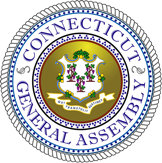 State Senator Toni Boucher of Danbury told the Commission: “I hope that the commission to adopt a definition of general budget expenditures that is comprehensive and gives a complete and realistic account of all the money that the state spends… it is equally critical that the legislature not be allowed to move what was once an expenditure included under the cap to bonding or fund it with a revenue intercept for the purpose of undermining the cap’s integrity.”
State Senator Toni Boucher of Danbury told the Commission: “I hope that the commission to adopt a definition of general budget expenditures that is comprehensive and gives a complete and realistic account of all the money that the state spends… it is equally critical that the legislature not be allowed to move what was once an expenditure included under the cap to bonding or fund it with a revenue intercept for the purpose of undermining the cap’s integrity.”